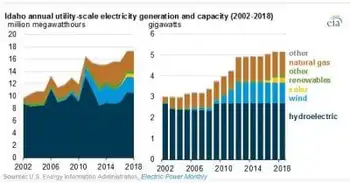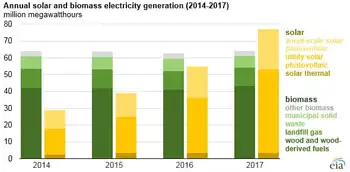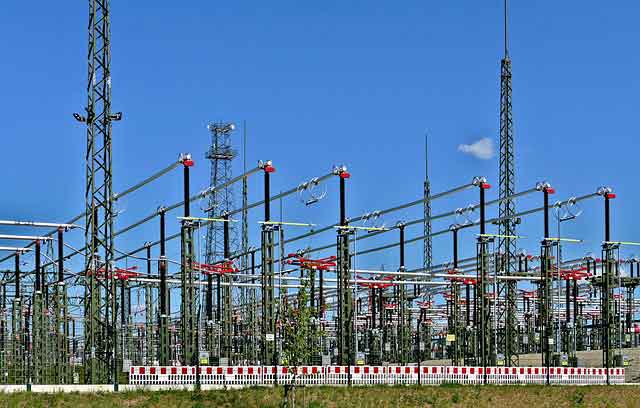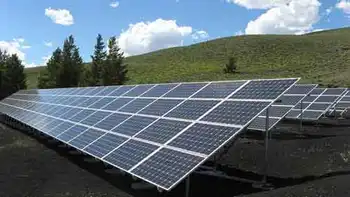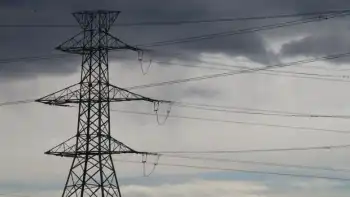More rules needed for wind power, study concludes
By Charleston Gazette
Protective Relay Training - Basic
Our customized live online or in‑person group training can be delivered to your staff at your location.

- Live Online
- 12 hours Instructor-led
- Group Training Available
A team of academy experts concluded that wind power can help offset the greenhouse emissions caused by coal and other fossil-fuel energy sources, but the projected growth of wind power in West Virginia, Virginia, Maryland and Pennsylvania creates potential threats to bird and bat populations that are not fully understood, the academy study found.
Windmill “farms” also can cause other environmental problems and create legitimate aesthetic concerns for local communities — ranging from damage to scenic vistas to noise and “shadow flicker”, a strobe-like effect created by rotating turbines, the report found.
“The United States is in the early stages of learning how to plan for and regulate wind-energy facilities,” says the report, compiled by the National Academy’s National Research Council.
The report said the cumulative effects of continued growth in wind power are unclear, and that further study is needed.
“A better analysis of the cumulative effects of various anthropogenic energy sources, including wind turbines, on bird and bat fatalities is needed, especially given projections of substantial increases in the numbers of wind turbines in coming decades,” the report said.
The 267-page report was requested by Congress, and pushed for by Rep. Alan Mollohan, D-W.Va.
MollohanÂ’s district is home to the Mountaineer wind project, with 44 turbines, each 340 feet tall, spread across 4,000 acres of ridges near Thomas.
In West Virginia, state officials have approved three other, much larger wind projects and have begun hearings on another. At least six other large wind projects are said to be in the works for West Virginia, Mollohan said during a recent congressional hearing.
Since 2000, U.S. wind power capacity has more than quadrupled, to more than 11,600 megawatts, according to the National Academy report. ThatÂ’s about equal to four coal-fired facilities the size of the John E. Amos Power Plant near Winfield.
Estimates of wind power production increases vary widely, with projections for the next 15 years ranging from 19,000 megawatts to 72,000 megawatts, the report said.
To meet that goal would require 9,500 to 36,000 new turbines, the study said. Operating at optimum wind speeds, it takes a modern, 1.5-megawatt wind turbine about eight hours to generate enough electricity for an average U.S. household for a year.
Meanwhile, federal regulation of wind projects on private land “is minimal,” the report found. While some states have developed guidelines, most are “relatively inexperienced at planning and regulation.”
In West Virginia, the study noted, the state Public Service Commission reviews windmill-siting proposals through a set of new guidelines.
In a 2005 report, the U.S. Government Accountability Project found that PSC officials said they did not have the expertise to evaluate wildlife impacts and review studies prior to construction.
In the Mid-Atlantic region, the study found, windmill blades have killed more bats than expected, based on experience in other regions.
“Not enough information is available to form a reliable judgment on whether the number of bats being killed will have overall effects on populations, but given a general region-wide decline in the populations of several species of bats in the eastern United States, the possibility of population effects, especially with increased numbers of turbines, is significant,” the study said.
At the current level of wind-energy development, the study said, no evidence was found that fatalities caused by wind turbines will result in “measurable demographic changes” to bird populations.
The study added, “There is insufficient information available at present to form a reliable judgment on the likely effect of all the proposed or planned wind-energy installations in the mid-Atlantic region on bird populations.
“To make such a judgment, information would be needed on the future number, size and placement of those turbines; more information on bird populations, movements, and susceptibility to collisions with turbines would be needed as well,” the report said.
The study also found that aesthetic concerns are often the most vocal complaints about wind-power projects, but that those concerns are seldom adequately addressed by siting reviews.
Earlier, Mollohan called for a federal law to regulate windmill siting, modeled after the 1977 Surface Mining Control and Reclamation Act.
Mollohan said such a law would provide federal oversight to make sure states properly review windmill proposals. He said the nation should learn from the damage done by previously unregulated energy industries such as coal.
“All you have to do is look at the energy producing areas of the country to know that we are playing catch up because we didn’t understand the impacts of the energy production we had in the past,” he said.






